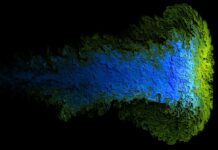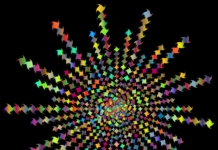Aphantasia, a term that has emerged in recent years, refers to a unique cognitive phenomenon where individuals lack the ability to visualize mental images in their mind’s eye. Unlike most people who can conjure up vivid mental images of familiar faces, places, or objects, those with aphantasia experience a blank canvas when attempting to visualize. This fascinating condition has sparked the interest of scientists, psychologists, and the general public, leading to a growing body of research and understanding of the intricacies of human perception and cognition.
The term “aphantasia” was first introduced in 2015 by Professor Adam Zeman of the University of Exeter, UK. Prior to its formal identification, individuals with this condition may not have recognized their unique way of experiencing the world of mental imagery. With the emergence of the term, aphantasia has gained attention and recognition as a distinct cognitive variation, enriching our understanding of the diversity of human minds.
Aphantasia is not a well-known concept, and many people may not even be aware of its existence. Those who have aphantasia often describe their lack of a mental visualizer as a surprising revelation, as they might have assumed that the way they perceive images in their mind is similar to how others do. It is important to recognize that aphantasia does not signify a deficit in imagination or memory. Instead, it pertains solely to the absence of the visual component in mental imagery.
The range of experiences in aphantasia is vast, and individuals may vary in their ability to visualize different types of images or scenes. Some may have a complete absence of mental imagery, while others may experience partial or fragmented visualizations. Similarly, the vividness and clarity of mental images can differ from person to person. Understanding these individual differences is an essential aspect of exploring the complexity of aphantasia.
Researchers have utilized various methods, including questionnaires and neuroimaging techniques, to investigate aphantasia and its underlying neural mechanisms. Neuroimaging studies have revealed intriguing insights into the brain activity of those with aphantasia when asked to visualize images. Compared to individuals with typical imagery abilities, individuals with aphantasia show different patterns of brain activation, particularly in brain regions associated with visual processing.
One of the essential questions in aphantasia research is whether this condition is congenital or acquired. While some individuals report having aphantasia since childhood, others may develop it later in life due to certain neurological conditions or brain injuries. Unraveling the origins of aphantasia is a complex task, as it involves understanding the interplay between genetics, brain structure, and environmental factors.
Despite the challenges in understanding the mechanisms of aphantasia, research has revealed some intriguing associations. For example, aphantasia has been linked to differences in the functioning of the brain’s visual cortex, which plays a crucial role in processing visual information. Some studies have also suggested that aphantasia may be associated with an increased reliance on other sensory modalities, such as auditory or kinesthetic processing, to compensate for the lack of mental imagery.
The implications of aphantasia extend beyond the realms of cognitive psychology and neurology. The condition has intrigued philosophers, artists, and writers who have contemplated the nature of human consciousness and the role of mental imagery in creativity and self-awareness. Exploring the experiences of individuals with aphantasia sheds light on the complexity of human perception and raises questions about the nature of subjective experiences.
In the educational context, understanding aphantasia can help educators tailor their teaching methods to accommodate the diversity of students’ cognitive styles. Aphantasic individuals may excel in certain types of learning and problem-solving tasks that do not heavily rely on visual imagery. Recognizing and valuing different cognitive approaches can create more inclusive learning environments.
The lived experiences of individuals with aphantasia can be emotionally significant, particularly when they become aware of their unique cognitive style. Some individuals may feel a sense of relief and validation upon learning about aphantasia, as it provides an explanation for their distinctive way of perceiving the world. On the other hand, there may be challenges related to the difficulty of conveying their internal experiences to others, especially in a culture where mental imagery is often assumed to be universal.
An intriguing aspect of aphantasia is its potential relation to the concept of “mental blindness” or “mind-blindness,” which has been discussed in the context of certain neurological conditions like autism spectrum disorder. Mind-blindness refers to difficulties in understanding and interpreting the mental states of others, such as their thoughts, emotions, and intentions. Some researchers have explored whether aphantasia and mind-blindness are related in some individuals, suggesting potential connections between the way we perceive others’ mental states and the way we visualize mental imagery.
The study of aphantasia is a relatively young field, and many questions remain to be explored. Researchers are actively investigating the prevalence of aphantasia in the general population, seeking to better understand the factors that contribute to individual differences in imagery abilities. The growing interest in aphantasia has led to online communities and support groups where individuals with this condition can share their experiences and learn from others with similar cognitive styles.
In conclusion, aphantasia is a fascinating and relatively uncharted territory in the study of human cognition. The condition challenges our assumptions about how individuals experience mental imagery and raises questions about the nature of consciousness and subjective experiences. As research in this area continues to evolve, we can anticipate further insights into the workings of the human mind and the intricate interplay between perception, cognition, and creativity.
Aphantasia is a cognitive phenomenon characterized by the inability to visualize mental images in the mind’s eye.
The term “aphantasia” was introduced in 2015 by Professor Adam Zeman of the University of Exeter.
Individuals with aphantasia lack the ability to mentally visualize familiar faces, places, or objects.
Aphantasia does not signify a deficit in imagination or memory; it pertains solely to the absence of the visual component in mental imagery.
The range of experiences in aphantasia varies, with some individuals experiencing a complete absence of mental imagery, while others have partial or fragmented visualizations.
Research has utilized questionnaires and neuroimaging techniques to explore the neural mechanisms underlying aphantasia.
Aphantasia has been associated with differences in brain activity in regions related to visual processing, such as the visual cortex.
The origins of aphantasia are complex and may involve a combination of genetic, neurological, and environmental factors.
The condition has implications in various fields, including cognitive psychology, neurology, philosophy, education, and art.
Research on aphantasia is still evolving, with ongoing investigations into prevalence, individual differences, and the implications of this unique cognitive variation.
Aphantasia is a concept that has captivated the curiosity of scientists, psychologists, and the general public alike. As researchers delve into the mysteries of the human mind, exploring the depths of perception, cognition, and consciousness, aphantasia emerges as an intriguing puzzle piece in the grand tapestry of the human experience.
In the realm of cognitive psychology, the study of aphantasia leads us to question the nature of mental imagery and the variability of cognitive processes among individuals. While most people can easily visualize familiar scenes, faces, or objects in their mind’s eye, those with aphantasia experience a blank canvas when attempting to conjure up mental images. This variation in cognitive ability challenges traditional notions of how our minds function and raises questions about the diversity of subjective experiences.
The implications of aphantasia extend beyond the scientific realm and seep into the domains of art, literature, and culture. Artists, writers, and creative thinkers have long been inspired by the power of the human imagination, using vivid mental imagery to craft masterpieces and convey emotions. The revelation of aphantasia adds an intriguing layer to these artistic endeavors, prompting us to ponder the different pathways that lead to creative expression.
Aphantasia’s influence also finds its way into our understanding of memory and how we recall past experiences. For individuals with aphantasia, the absence of visual imagery might lead to unique ways of remembering events and details. Some individuals may rely more heavily on other sensory cues, such as auditory or tactile memories, to reconstruct past experiences.
Moreover, the phenomenon of aphantasia highlights the complexity of the human brain and the vast range of cognitive abilities that exist within our species. It challenges the notion of a universal human experience and reminds us that our perceptions of the world are highly individualized. In a world where we often seek common ground with others, aphantasia reminds us of the richness of human diversity and the distinctiveness of our inner worlds.
Understanding aphantasia also calls into question the very nature of consciousness and self-awareness. The ability to form mental images is deeply intertwined with our sense of self and our understanding of the external world. Aphantasia offers a unique perspective on how our minds construct reality, challenging us to reconsider the nature of subjective experience and the foundations of consciousness.
In a practical sense, the study of aphantasia has implications for educational practices and learning styles. Recognizing that individuals may vary in their ability to visualize mental images, educators can adapt their teaching methods to accommodate diverse cognitive styles. Embracing these individual differences can foster a more inclusive and effective learning environment for students.
The exploration of aphantasia also shines a light on the complexities of human perception and cognition. It reminds us that our understanding of the mind is an ever-evolving field, and there is much to be discovered about the inner workings of the brain. Aphantasia challenges researchers to develop new methodologies and approaches to studying cognition, encouraging them to push the boundaries of scientific inquiry.
Beyond the scientific and philosophical implications, the emergence of aphantasia as a recognized cognitive variation has social and cultural reverberations. Online communities and support groups have sprung up, offering individuals with aphantasia a space to share their experiences and connect with others who can relate to their unique way of perceiving the world. This sense of community and validation can be empowering for individuals who may have previously felt isolated in their experiences.
Aphantasia’s visibility in public discourse has also led to discussions about neurodiversity and the recognition of diverse cognitive styles as a fundamental aspect of human variation. Embracing neurodiversity challenges societal norms that privilege certain ways of thinking and perceiving, encouraging a more inclusive and accepting society that values the richness of cognitive differences.
The journey of aphantasia from a relatively obscure concept to a subject of scientific inquiry and public interest reflects the dynamic nature of human knowledge. As we unlock the mysteries of the mind, we continuously uncover new facets of human cognition and perception. Aphantasia serves as a reminder of the vastness of human potential and the boundless complexity of our inner worlds.
In conclusion, aphantasia is a captivating concept that has captured the attention of researchers, thinkers, and the public. It challenges our understanding of mental imagery, cognition, and consciousness, providing a window into the diversity of human experiences. From its scientific implications to its cultural and social significance, aphantasia prompts us to explore the depths of the human mind and appreciate the intricate tapestry of human cognition. As research in this area continues to evolve, we can anticipate even greater insights into the workings of the human brain and the incredible diversity of human perception and cognition.






















